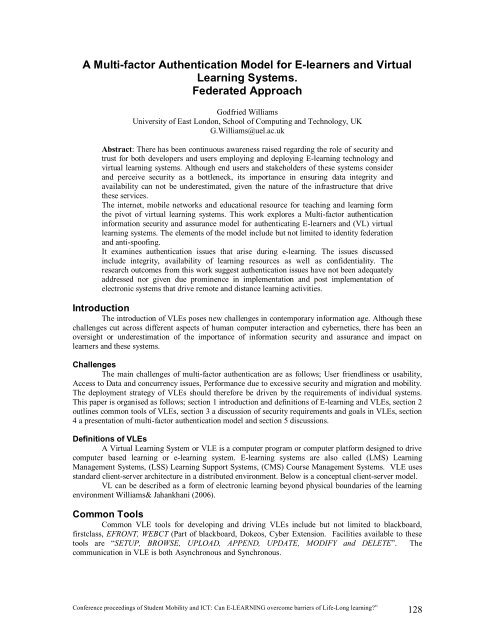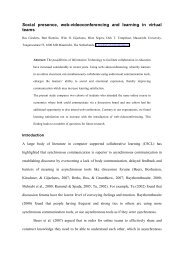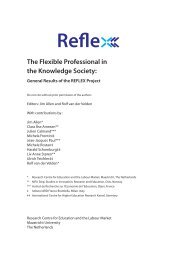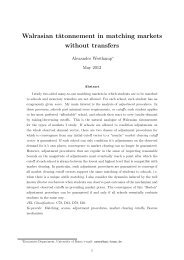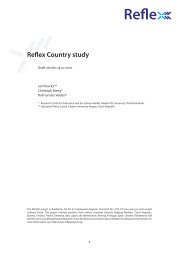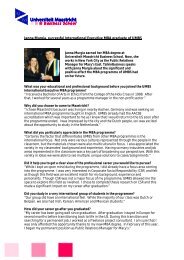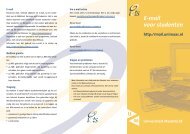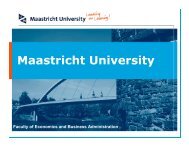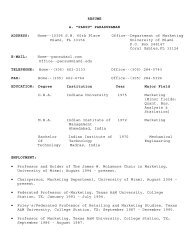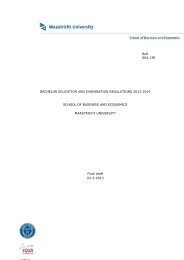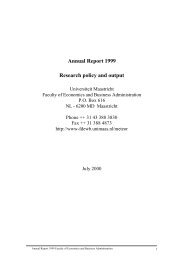proceedings of Student Mobility and ICT: Can E-LEARNING
proceedings of Student Mobility and ICT: Can E-LEARNING
proceedings of Student Mobility and ICT: Can E-LEARNING
Create successful ePaper yourself
Turn your PDF publications into a flip-book with our unique Google optimized e-Paper software.
A Multi-factor Authentication Model for E-learners <strong>and</strong> Virtual<br />
Learning Systems.<br />
Federated Approach<br />
Godfried Williams<br />
University <strong>of</strong> East London, School <strong>of</strong> Computing <strong>and</strong> Technology, UK<br />
G.Williams@uel.ac.uk<br />
Abstract: There has been continuous awareness raised regarding the role <strong>of</strong> security <strong>and</strong><br />
trust for both developers <strong>and</strong> users employing <strong>and</strong> deploying E-learning technology <strong>and</strong><br />
virtual learning systems. Although end users <strong>and</strong> stakeholders <strong>of</strong> these systems consider<br />
<strong>and</strong> perceive security as a bottleneck, its importance in ensuring data integrity <strong>and</strong><br />
availability can not be underestimated, given the nature <strong>of</strong> the infrastructure that drive<br />
these services.<br />
The internet, mobile networks <strong>and</strong> educational resource for teaching <strong>and</strong> learning form<br />
the pivot <strong>of</strong> virtual learning systems. This work explores a Multi-factor authentication<br />
information security <strong>and</strong> assurance model for authenticating E-learners <strong>and</strong> (VL) virtual<br />
learning systems. The elements <strong>of</strong> the model include but not limited to identity federation<br />
<strong>and</strong> anti-spo<strong>of</strong>ing.<br />
It examines authentication issues that arise during e-learning. The issues discussed<br />
include integrity, availability <strong>of</strong> learning resources as well as confidentiality. The<br />
research outcomes from this work suggest authentication issues have not been adequately<br />
addressed nor given due prominence in implementation <strong>and</strong> post implementation <strong>of</strong><br />
electronic systems that drive remote <strong>and</strong> distance learning activities.<br />
Introduction<br />
The introduction <strong>of</strong> VLEs poses new challenges in contemporary information age. Although these<br />
challenges cut across different aspects <strong>of</strong> human computer interaction <strong>and</strong> cybernetics, there has been an<br />
oversight or underestimation <strong>of</strong> the importance <strong>of</strong> information security <strong>and</strong> assurance <strong>and</strong> impact on<br />
learners <strong>and</strong> these systems.<br />
Challenges<br />
The main challenges <strong>of</strong> multi-factor authentication are as follows; User friendliness or usability,<br />
Access to Data <strong>and</strong> concurrency issues, Performance due to excessive security <strong>and</strong> migration <strong>and</strong> mobility.<br />
The deployment strategy <strong>of</strong> VLEs should therefore be driven by the requirements <strong>of</strong> individual systems.<br />
This paper is organised as follows; section 1 introduction <strong>and</strong> definitions <strong>of</strong> E-learning <strong>and</strong> VLEs, section 2<br />
outlines common tools <strong>of</strong> VLEs, section 3 a discussion <strong>of</strong> security requirements <strong>and</strong> goals in VLEs, section<br />
4 a presentation <strong>of</strong> multi-factor authentication model <strong>and</strong> section 5 discussions.<br />
Definitions <strong>of</strong> VLEs<br />
A Virtual Learning System or VLE is a computer program or computer platform designed to drive<br />
computer based learning or e-learning system. E-learning systems are also called (LMS) Learning<br />
Management Systems, (LSS) Learning Support Systems, (CMS) Course Management Systems. VLE uses<br />
st<strong>and</strong>ard client-server architecture in a distributed environment. Below is a conceptual client-server model.<br />
VL can be described as a form <strong>of</strong> electronic learning beyond physical boundaries <strong>of</strong> the learning<br />
environment Williams& Jahankhani (2006).<br />
Common Tools<br />
Common VLE tools for developing <strong>and</strong> driving VLEs include but not limited to blackboard,<br />
firstclass, EFRONT, WEBCT (Part <strong>of</strong> blackboard, Dokeos, Cyber Extension. Facilities available to these<br />
tools are “SETUP, BROWSE, UPLOAD, APPEND, UPDATE, MODIFY <strong>and</strong> DELETE”. The<br />
communication in VLE is both Asynchronous <strong>and</strong> Synchronous.<br />
Conference <strong>proceedings</strong> <strong>of</strong> <strong>Student</strong> <strong>Mobility</strong> <strong>and</strong> <strong>ICT</strong>: <strong>Can</strong> E-<strong>LEARNING</strong> overcome barriers <strong>of</strong> Life-Long learning?” 128


